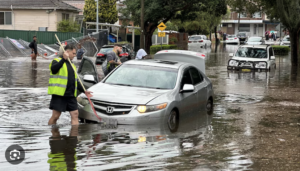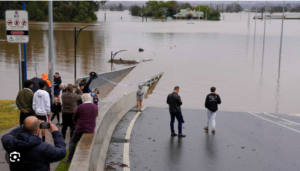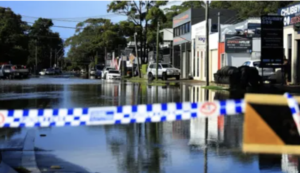Understanding Sydney’s Recent Flooding: Causes and Impacts
Decoding Sydney's Recent Flooding: Unraveling Causes and Impacts

Introduction:
Sydney, Australia’s iconic metropolis, recently grappled with severe flooding, leaving communities devastated and prompting urgent questions about its causes and impacts. In this blog post, we delve deep into the factors behind Sydney’s recent flooding, assess its widespread impacts, and shed light on the path to recovery.
Key Points:
1. **Weather Events and Climate Patterns:**
– Explore the weather events and climate patterns that contributed to the flooding in Sydney.
– Analyze meteorological phenomena such as intense rainfall, atmospheric rivers, and climate variability that played a role in the flooding.

2. **Urban Development and Infrastructure:**
– Examine the role of urban development and infrastructure in exacerbating flooding risks.
– Discuss factors such as urbanization, impervious surfaces, inadequate drainage systems, and urban planning decisions that may have increased vulnerability to flooding.
3. **Natural Geography and Hydrology:**
– Understand Sydney’s natural geography and hydrological features that influence flooding dynamics.
– Investigate factors such as topography, river systems, coastal proximity, and soil characteristics that contribute to flood susceptibility.

4. **Impacts on Communities and Environment:**
– Assess the widespread impacts of the flooding on communities, infrastructure, and the environment.
– Highlight consequences such as property damage, displacement of residents, disruptions to transportation, and ecological harm to natural habitats.
5. **Emergency Response and Relief Efforts:**
– Review the emergency response measures implemented to address the immediate aftermath of the flooding.
– Highlight the role of emergency services, government agencies, volunteers, and community organizations in providing assistance and support to affected individuals and communities.

- Weather Dynamics: Unravel the atmospheric intricacies that contributed to Sydney’s flooding. Explore meteorological phenomena such as heavy rainfall, cyclonic systems, and atmospheric rivers, which played pivotal roles in triggering the floods.
- Urban Development and Drainage: Examine the influence of urbanization on Sydney’s flood vulnerability. Learn how rapid population growth, inadequate drainage systems, and impervious surfaces exacerbate the risk of flooding, particularly in low-lying areas and floodplains.
- Riverine and Flash Flooding: Distinguish between riverine flooding, caused by overflowing rivers and creeks due to prolonged rainfall, and flash flooding, resulting from intense rainfall overwhelming drainage systems in urban areas. Understand the distinct characteristics and impacts of each type of flooding on Sydney.

- Impact on Infrastructure: Assess the repercussions of flooding on Sydney’s infrastructure. Explore disruptions to transportation networks, damage to roads and bridges, and challenges faced by utilities such as water supply and wastewater treatment plants.
- Social and Economic Consequences: Delve into the social and economic impacts of flooding on Sydney’s residents and businesses. Investigate property damage, displacement of families, loss of livelihoods, and the financial toll of recovery and rebuilding efforts.
**Conclusion:**
Sydney’s recent flooding serves as a stark reminder of the complex interplay between natural hazards, human activities, and climate change. By understanding the causes and impacts of flooding, we can take proactive steps to enhance resilience, mitigate risks, and build more sustainable and adaptive communities for the future.

**Call to Action:**
Join us in raising awareness about the causes and impacts of Sydney’s recent flooding. Together, let’s advocate for evidence-based policies, investment in resilient infrastructure, and community-led initiatives to address the challenges posed by flooding and safeguard the well-being of Sydney’s residents and environment.